61 start with D start with D

William Henry Harrison Clayton was one of nearly 75,000 soldiers from Iowa to join the Union ranks during the Civil War. Possessing a high school education and superior penmanship, Clayton served as a company clerk in the 19th Infantry, witnessing battles in the Trans-Mississippi theater. His diary and his correspondence with his family in Van Buren County form a unique narrative of the day-to-day soldier life as well as an eyewitness account of critical battles and a prisoner-of-war camp.
Clayton participated in the siege of Vicksburg and took part in operations against Mobile, but his writings are unique for the descriptions he gives of lesser-known but pivotal battles of the Civil War in the West. Fighting in the Battle of Prairie Grove, the 19th Infantry sustained the highest casualties of any federal regiment on the field. Clayton survived that battle with only minor injuries, but he was later captured at the Battle of Stirling's Plantation and served a period of ten months in captivity at Camp Ford, Texas.
Clayton's writing reveals the complicated sympathies and prejudices prevalent among Union soldiers and civilians of that period in the country's history. He observes with great sadness the brutal effects of war on the South, sympathizing with the plight of refugees and lamenting the destruction of property. He excoriates draft evaders and Copperheads back home, conveying the intra-sectional acrimony wrought by civil war. Finally, his racist views toward blacks demonstrate a common but ironic attitude among Union soldiers whose efforts helped lead to the abolition of slavery in the United States.
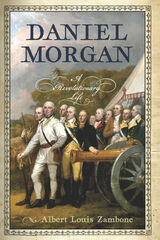
On January 17, 1781, at Cowpens, South Carolina, the notorious British cavalry officer Banastre Tarleton and his legion had been destroyed along with the cream of Lord Cornwallis’s troops. The man who planned and executed this stunning American victory was Daniel Morgan. Once a barely literate backcountry laborer, Morgan now stood at the pinnacle of American martial success. Born in New Jersey in 1736, he left home at seventeen and found himself in Virginia’s Shenandoah Valley. There he worked in mills and as a teamster, and was recruited for Braddock’s disastrous expedition to take Fort Duquesne from the French in 1755. When George Washington called for troops to join him at the siege of Boston in 1775, Morgan organized a select group of riflemen and headed north. From that moment on, Morgan’s presence made an immediate impact on the battlefield and on his superiors. Washington soon recognized Morgan’s leadership and tactical abilities. When Morgan’s troops blocked the British retreat at Saratoga in 1777, ensuring an American victory, he received accolades from across the colonies.
In Daniel Morgan: A Revolutionary Life, the first biography of this iconic figure in forty years, historian Albert Louis Zambone presents Morgan as the quintessential American everyman, who rose through his own dogged determination from poverty and obscurity to become one of the great battlefield commanders in American history. Using social history and other advances in the discipline that had not been available to earlier biographers, the author provides an engrossing portrait of this storied personality of America’s founding era—a common man in uncommon times.
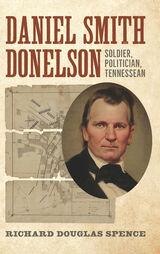
In June of 1863, Col. William P. Sanders led a cavalry raid of 1,300 men from the Union Army of the Ohio through Confederate-held East Tennessee. The raid severed the Confederate rail supply line from Virginia to the Western Theater and made national headlines. Until now, this incredible feat has been relegated to a footnote in the voluminous history of the American Civil War.
In Yankee Commandos, Stuart Brandes presents readers with the most complete account of the Sanders raid to date by using newly discovered and under-explored materials, such as Sanders’s official reports and East Tennessee diaries and memoirs in which Sanders is chronicled. The book presents important details of a cavalry raid through East Tennessee that further turned the tide of war for the Union in the Western Theater. It also sheds light on the raid’s effect on the divided civilian population of East Tennessee, where, unlike the largely pro-secession populations of Middle and West Tennessee, the fraction of enlisted men to the Union cause rose to nearly a quarter.
Colonel Sanders remains an enigma of the American Civil War. (He was a cousin of Confederate president Jefferson Davis, and his father and three brothers donned Confederate gray at the outbreak of the war.) By studying the legend of Sanders and his raid, Brandes fills an important gap in Civil War scholarship and in the story of Unionism in a mostly Confederate-sympathizing state.
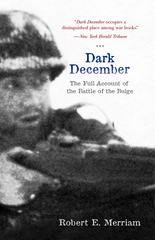
One of the Most Important Histories of the Greatest Battle on the Western Front in World War II
“Dark December occupies a distinguished place among war books. Every paragraph is based upon evidence, not flimsy wartime rumors. Technical enough for the professional, accurate enough for the historian (in fact, it is history of the best), it is lucid and understandable for the general reader.”—New York Herald Tribune
“If other veterans of the Army’s historical division can maintain Mr. Merriam’s high standard of stimulating, critical and painstaking work, we will be fortunate. Dark December can be heartily recommended to anyone faintly interested in the war.”—New York Times
“The book explodes a number of myths which have been winning their improper way into general belief.” —Arthur Schlesinger, Jr., Booklist
The massive German counteroffensive through Belgium’s Ardennes forest in December 1944 took the American and British armies by surprise and changed the outcome of the war. With whole divisions destroyed and decimated, the American army scrambled to contain the German threat, while also trying to determine how such an attack had gone undetected. The Americans succeeded in winning the month-long battle, commonly known as the Battle of the Bulge, through the tenacity of several pockets of troops, notably those in the Belgian town of Bastogne, and the remarkable rapid movement of Patton’s Third Army to seal the breech in the American lines. The battle stalled the British and American advances and lengthened the war with the result that the Soviet Union was able to make greater gains in Europe than previously anticipated. Dark December is a thorough and engrossing examination of the Battle of the Bulge by a historian who had the opportunity to prepare notes as the battle was occurring and consult classified American as well as German records. Notably, the book contains unique and critical information, including details gleaned from interviews conducted by the author with commanding officers on both sides, some of which are the only reports gathered from these sources. Originally published in 1947, this the first paperback edition with the complete original text and maps.
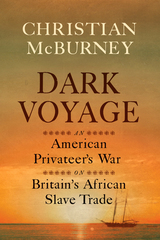
One privateer was given an extraordinary task: to sail across the Atlantic to attack British slave trading posts and ships on the coast of West Africa. Based on a little-known contemporary primary source, The Journal of the Good Ship Marlborough, the story of this remarkable voyage is told here for the first time and will have a major impact on our understanding of the Atlantic slave trade and the American Revolution. The voyage of the Marlborough was the brainchild of John Brown, a prominent Rhode Island merchant—and an investor in two slave trading voyages himself. The motivation was not altruistic. The officers and crew of the Marlborough wanted to advance the cause of independence from Britain through harming Britain’s economy, but they also desired to enrich themselves by selling the plunder they captured—including enslaved Africans.
The work of the Marlborough and other American privateers was so disruptive that it led to an unintended consequence: virtually halting the British slave trade. British slave merchants, alarmed at losing money from their ships being captured, invested in many fewer slave voyages. As a result tens of thousands of Africans were not forced onto slave ships, transported to the New World, and consigned to a lifetime of slavery or an early death.
In Dark Voyage: An American Privateer’s War on Britain’s African Slave Trade, veteran researcher and writer Christian McBurney recreates the harrowing voyage of the Marlborough, while placing it in the context of Atlantic World slavery. In Africa, Marlborough’s officers come across an array of African and European slave traders willing to assist them in attacking the British. This book is also the first study to detail the many captures American privateers made of British slave ships during the Revolutionary War.
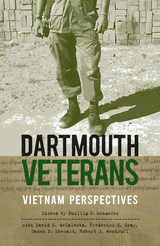
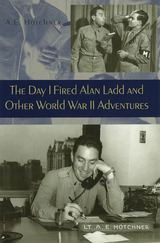
"To perform heroically in a perilous situation is one thing, but I found that, in my case, the real difficulty was in getting myself into a spot where heroism was possible. Nobody on latrine duty ever got the Medal of Honor."
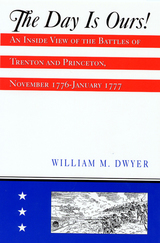
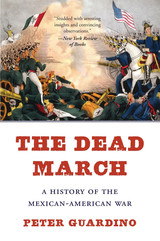
Winner of the Bolton-Johnson Prize
Winner of the Utley Prize
Winner of the Distinguished Book Award, Society for Military History
“The Dead March incorporates the work of Mexican historians…in a story that involves far more than military strategy, diplomatic maneuvering, and American political intrigue…Studded with arresting insights and convincing observations.”
—James Oakes, New York Review of Books
“Superb…A remarkable achievement, by far the best general account of the war now available. It is critical, insightful, and rooted in a wealth of archival sources; it brings far more of the Mexican experience than any other work…and it clearly demonstrates the social and cultural dynamics that shaped Mexican and American politics and military force.”
—Journal of American History
It has long been held that the United States emerged victorious from the Mexican–American War because its democratic system was more stable and its citizens more loyal. But this award-winning history shows that Americans dramatically underestimated the strength of Mexican patriotism and failed to see how bitterly Mexicans resented their claims to national and racial superiority. Their fierce resistance surprised US leaders, who had expected a quick victory with few casualties.
By focusing on how ordinary soldiers and civilians in both countries understood and experienced the conflict, The Dead March offers a clearer picture of the brief, bloody war that redrew the map of North America.
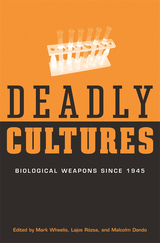
The threat of biological weapons has never attracted as much public attention as in the past five years. Current concerns largely relate to the threat of weapons acquisition and use by rogue states or by terrorists. But the threat has deeper roots—it has been evident for fifty years that biological agents could be used to cause mass casualties and large-scale economic damage. Yet there has been little historical analysis of such weapons over the past half-century.
Deadly Cultures sets out to fill this gap by analyzing the historical developments since 1945 and addressing three central issues: Why have states continued or begun programs for acquiring biological weapons? Why have states terminated biological weapons programs? How have states demonstrated that they have truly terminated their biological weapons programs?
We now live in a world in which the basic knowledge needed to develop biological weapons is more widely available than ever before. Deadly Cultures provides the lessons from history that we urgently need in order to strengthen the long-standing prohibition of biological weapons.
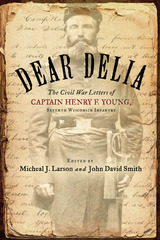
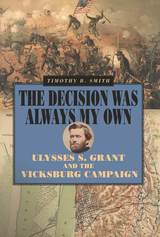
Showing how and why Grant became such a successful general, Smith presents a fast-paced reexamination of the commander and the campaign. His fresh analysis of Grant’s decision-making process during the Vicksburg maneuvers, battles, and siege details the course of campaigning on military, political, administrative, and personal levels. The narrative is organized around Grant’s eight key decisions: to begin operations against Vicksburg, to place himself in personal charge of the campaign, to begin active operations around the city, to sweep toward Vicksburg from the south, to march east of Vicksburg and cut the railroad before attacking, to assault Vicksburg twice in an attempt to end the campaign quickly, to lay siege after the assaults had failed, and to parole the surrendered Confederate garrison rather than send the Southern soldiers to prison camps.
The successful military campaign also required Grant to master political efforts, including handling Lincoln’s impatience and dealing with the troublesome political general John A. McClernand. Further, he had to juggle administrative work with military decision making. Grant was more than a military genius, however; he was also a husband and a father, and Smith shows how Grant’s family was a part of everything he did.
Grant’s nontraditional choices went against the accepted theories of war, supply, and operations as well as against the chief thinkers of the day, such as Henry Halleck, Grant’s superior. Yet Grant pulled off the victory in compelling fashion. In the first in-depth examination in decades, Smith shows how Grant’s decisions created and won the Civil War’s most brilliant, complex, decisive, and lengthy campaign.
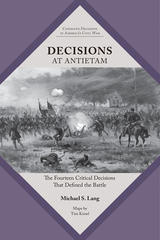
The Battle of Antietam has long been known as the bloodiest day in American military history with more than twenty thousand soldiers either dead, wounded, or missing. The Confederacy, emboldened after a conclusive victory at the Battle of Second Manassas, launched the Maryland Campaign and considered a decisive battle on northern soil as a lynchpin to their objectives. As Gen. Robert E. Lee pushed his veteran Army of Northern Virginia deeper into Maryland, Gen. George B. McClellan hastily assembled a refurbished Army of the Potomac. After engagements at South Mountain and Harpers Ferry, Lee concentrated his forces near the small village of Sharpsburg. On September 17, 1862, McClellan attacked at dawn, igniting a battle that raged until sunset. By the end of the following day, Lee’s battered army began its withdrawal. The eventual Confederate retreat provided the Lincoln Administration a much sought after victory. President Lincoln announced the Emancipation Proclamation just four days later, dramatically altering the very nature of the war.
Decisions at Antietam introduces readers to critical decisions made by Confederate and Union commanders throughout the battle. Michael S. Lang examines the decisions that prefigured the action and shaped the contest as it unfolded. Rather than a linear history of the battle, Lang’s discussion of the critical decisions presents readers with a vivid blueprint of the battle’s developments. Exploring the critical decisions in this way allows the reader to progress from a sense of what happened in these battles to why they happened as they did
Complete with maps and a guided tour, Decisions at Antietam is an indispensable primer, and readers looking for a concise introduction to the battle can tour this sacred ground—or read about it at their leisure—with key insights into the battle and a deeper understanding of the Civil War itself.
Decisions at Antietam is the ninth in a series of books that will explore the critical decisions of major campaigns and battles of the Civil War.
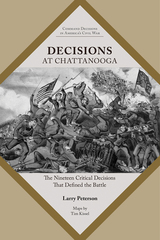
Decisions at Chattanooga introduces readers to critical decisions made by Confederate and Union commanders. Larry Peterson examines the decisions that shaped the way both campaign and battle unfolded. Rather than offering a history of the Battle of Chattanooga, Peterson focuses on the critical decisions, presenting the reader with a coherent and manageable blueprint of the battle’s development. Exploring and studying the critical decisions allows the reader to progress from an understanding of what happened to why events happened as they did.
Complete with maps and a guided tour, Decisions at Chattanooga is an indispensable primer, and readers looking for a digestible introduction to the Battle of Chattanooga can tour this sacred ground—or read about it at their leisure—with key insights into the campaign and a deeper understanding of the Civil War itself.
Decisions at Chattanooga is the fourth in a series of books that will explore the critical decisions of major campaigns and battles of the Civil War.
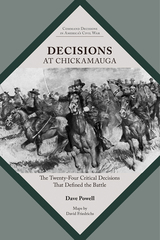
Decisions at Chickamauga introduces readers to critical decisions made by Confederate and Union commanders during that fateful battle. Rather than offering a history of the Battle of Chickamauga, Powell focuses on critical decisions as they developed. This account is designed to present the reader with a coherent and manageable interpretive blueprint of the battle’s key moments. Exploring and studying these critical decisions allows the reader to progress from an understanding of what happened to why events happened as they did.
Complete with maps and a guided tour, Decisions at Chickamauga will be an indispensable primer, and readers looking for a digestible introduction to the Battle of Chickamauga can tour this sacred ground—or read about it at their leisure—and gain key insights into why events unfolded as they did as well as a deeper understanding of the Civil War itself.
Decisions at Chickamauga is the third in a series of books that will explore the critical decisions of major campaigns and battles of the Civil War.
DAVE POWELL is the author of five books on the Battle of Chickamauga, including the three-volume The Chickamauga Campaign. His articles have appeared in North & South Magazine, Gettysburg Magazine, and Civil War History, among others.

Decisions at Forts Henry and Donelson explores the critical decisions made by Confederate and Federal commanders during the battle and how these decisions shaped its outcome. Rather than offering a history of the battle, Hank Koopman hones in on a sequence of critical decisions made by commanders on both sides of the conflict to provide a blueprint of the Battles of Forts Henry and Donelson at their tactical core. Identifying and exploring the critical decisions in this way allows students of the battles to progress from a knowledge of what happened to a mature grasp of why events happened.
Complete with maps and a driving tour, Decisions at Forts Henry and Donelson is an indispensable primer, and readers looking for a concise introduction to these battles can tour this sacred ground—or read about it at their leisure—with key insights into the campaigns and a deeper understanding of the Civil War itself.
Decisions at Forts Henry and Donelson is the eighteenth in a series of books that will explore the critical decisions of major campaigns and battles of the Civil War.
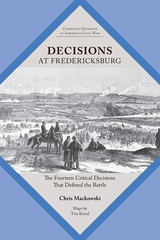
In the fall of 1862, after a leadership shake-up initiated by Lincoln, Gen. Ambrose Burnside assumed command of the Army of the Potomac and developed an aggressive plan to attack the Confederate capital of Richmond. However, in order to reach Richmond, Burnside had to march through Fredericksburg, where Gen. Robert E. Lee’s Army of Northern Virginia was well entrenched. After crossing the Rappahannock River under enemy fire, Burnside and his troops engaged Lee’s army within the city, then launched a futile frontal assault against a heavily fortified ridge west of Fredericksburg. The end result was a decisive victory for the Confederacy, as the Union army suffered more than double the number of casualties as its foes. Burnside would resign a month later but would resurface as war in the Western Theater grew heated.
Decisions at Fredericksburg explores the critical decisions made by Confederate and Union commanders during the battle and how these decisions shaped its outcome. Rather than offering a history of the battle, Chris Mackowski hones in on a sequence of critical decisions made by commanders on both sides of the contest to provide a blueprint of the Battle of Fredericksburg at its tactical core. Identifying and exploring the critical decisions in this way allows students of the battle to progress from knowledge of what happened to a mature grasp of why events happened.
Complete with maps and a driving tour, Decisions at Fredericksburg is an indispensable primer, and readers looking for a concise introduction to the battle can tour this sacred ground—or read about it at their leisure—with key insights into the campaign and a deeper understanding of the Civil War itself.
Decisions at Fredericksburg is the eleventh in a series of books that will explore the critical decisions of major campaigns and battles of the Civil War.
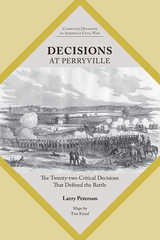
The largest battle fought in Kentucky during the American Civil War occurred at a small, crossroads town named Perryville. As Gen. Braxton Bragg’s Confederate Heartland Offensive sputtered through Kentucky, Maj. Gen. Don Carlos Buell’s reformed Army of the Ohio pursued the Army of the Mississippi and clashed with its rearguard just outside Perryville. Believing that he faced only a part of Buell’s army, Bragg ordered an assault on the Union left flank which resulted in Confederate victory. However, that evening Bragg determined the Army of the Ohio outnumbered him three to one and quickly decided to retreat. Outmanned, outmaneuvered, and lacking supplies and reinforcements, Bragg retreated through the Cumberland Gap into East Tennessee, and Kentucky remained in Union control for the rest of the Civil War.
Decisions at Perryville explores the critical decisions made by Confederate and Union commanders during the battle and how these decisions shaped its outcome. Rather than offering a history of the battle, Larry Peterson hones in on a sequence of critical decisions made by commanders on both sides of the contest to provide a blueprint of the Battle of Perryville at its tactical core. Identifying and exploring the critical decisions in this way allows students of the battle to progress from a knowledge of what happened to a mature grasp of why events happened.
Complete with maps and a driving tour, Decisions at Perryville is an indispensable primer, and readers looking for a concise introduction to the battle can tour this sacred ground—or read about it at their leisure—with key insights into the campaign and a deeper understanding of the Civil War itself.
Decisions at Perryville is the eleventh in a series of books that will explore the critical decisions of major campaigns and battles of the Civil War.
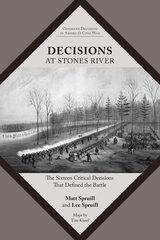
From December 31, 1862, to January 2, 1863, the Army of the Cumberland and Army of Tennessee fought a bloody battle along Stones River. Led by Major General William S. Rosecrans, Union forces would eventually emerge victorious. Coming at the end of a series of Union defeats, this victory would give Lincoln and the Northern population a bright ray of hope during a fall and winter of reversals.
Decisions at Stones River introduces readers to critical decisions made by Confederate and Union commanders. Matt Spruill and Lee Spruill examine the decisions that shaped the way the campaign and battle unfolded. Rather than offering a history of the Battle of Stones River, the Spruills focus on the critical decisions, those decisions that had a major impact on both Federal and Confederate forces in shaping the progression of the battle as we know it today. This account is designed to present the reader with a coherent and manageable blueprint of the battle’s development. Exploring and studying the critical decisions allows the reader to progress from an understanding of “what happened” to “why events happened” as they did.
Complete with maps and a guided tour, Decisions at Stones River is an indispensable primer, and readers looking for a digestible introduction to the Battle of Stones River can tour this sacred ground—or read about it at their leisure—with key insights into why events unfolded as they did and a deeper understanding of the Civil War itself.
Decisions at Stones River is the first in a series of books that will explore the critical decisions of major campaigns and battles of the Civil War
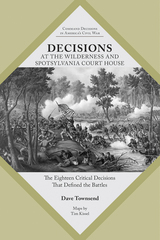
The successive battles of The Wilderness and Spotsylvania Court House opened Lt. Gen. Ulysses S. Grant’s 1864 Overland Campaign. As the first confrontation between Union and Confederate leaders Grant and Gen. Robert E. Lee, these two bloody battles signaled the new reality of war. The fighting at the Battle of The Wilderness, immediately followed by the Battle of Spotsylvania Court House, was costly for both sides, and while the Union army could replace its losses, Lee’s Army of Northern Virginia could not. It would be exactly one year from Grant’s orders to Gen. George G. Meade stating that Lee’s army would be his objective until the surrender at Appomattox.
Decisions at The Wilderness and Spotsylvania Court House introduces readers to critical decisions made by Confederate and Union commanders throughout the two costly meetings. Dave Townsend examines the decisions that prefigured the action and shaped the course of each battle as it unfolded. Rather than a linear history of the battles, Townsend’s discussion of the critical decisions presents readers with a vivid blueprint of the battles’ developments. Exploring the critical decisions in this way allows the reader to progress from a sense of what happened in these battles to why they happened as they did.
Complete with maps and a guided tour, Decisions at The Wilderness and Spotsylvania Court House is an indispensable primer, and readers looking for concise introductions to the battles can tour this sacred ground—or read about it at their leisure—with key insights into the battles and a deeper understanding of the Civil War itself.
Decisions at The Wilderness and Spotsylvania Court House is the seventh in a series of books that will explore the critical decisions of major campaigns and battles of the Civil War.
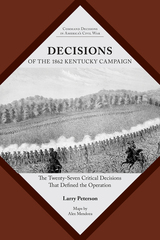
Decisions of the 1862 Kentucky Campaign introduces readers to critical decisions made by Confederate and Union commanders throughout the heartland contest. Rather than offering a history of the Kentucky Campaign, Larry Peterson hones in on a sequence of critical decisions confronting commanders on both sides of the clash to provide a blueprint of the campaign at its tactical core. Identifying and exploring the critical decisions in this way allows students of history to go from a rudimentary sense of the what of warfare, to a mature grasp of why.
Complete with maps and a guided tour, Decisions of the 1862 Kentucky Campaign is an indispensable primer, and readers looking for a digestible introduction to the campaign’s battles can tour this sacred ground—or read about it at their leisure—with key insights into the campaign and a deeper understanding of the Civil War itself.
Decisions of the 1862 Kentucky Campaign is the sixth in a series of books that will explore the critical decisions of major campaigns and battles of the Civil War.
LARRY PETERSON retired from United Airlines as a Boeing 757/767 Standard Captain. He is the author of Confederate Combat Commander: The Remarkable Life of Brigadier General Alfred Jefferson Vaughn Jr. and Decisions at Chattanooga.
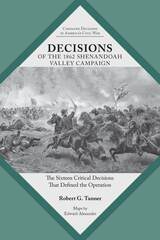
Decisions of the 1862 Shenandoah Valley Campaign explores the critical decisions made by Confederate and Union commanders during the battle and how these decisions shaped its outcome. Rather than offering a history of the battle, Robert G. Tanner hones in on a sequence of critical decisions made by commanders on both sides of the contest to provide a blueprint of Jackson’s Valley Campaign at its tactical core. Identifying and exploring the critical decisions in this way allows students of the battle to progress from a knowledge of what happened to a mature grasp of why events happened.
Complete with maps and a driving tour, Decisions of the 1862 Shenandoah Valley Campaign is an indispensable primer, and readers looking for a concise introduction to the battle can tour this sacred ground—or read about it at their leisure—with key insights into the campaign and a deeper understanding of the Civil War itself.
Decisions of the 1862 Shenandoah Valley Campaign is the seventeenth in a series of books that will explore the critical decisions of major campaigns and battles of the Civil War.
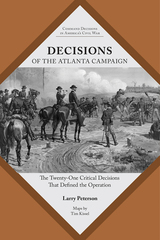
Decisions of the Atlanta Campaign introduces readers to critical decisions made by Confederate and Union commanders throughout that tide-turning summer of 1864. Rather than offering a history of the Atlanta Campaign, Larry Peterson hones in on a sequence of critical decisions confronting commanders on both sides of the clash to provide a blueprint of the campaign at its tactical core. Identifying and exploring the critical decisions in this way allows students of the campaign to progress from a rudimentary sense of the what of warfare, to a mature grasp of why.
Complete with maps and a guided tour, Decisions of the Atlanta Campaign is an indispensable primer, and readers looking for a digestible introduction to the Battle of Chattanooga can tour this sacred ground—or read about it at their leisure—with key insights into the campaign and a deeper understanding of the Civil War itself.
Decisions of the Atlanta Campaign is the fifth in a series of books that will explore the critical decisions of major campaigns and battles of the Civil War.
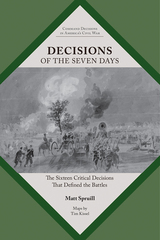
From June 25 to July 1, 1862, Gen. Robert E. Lee’s Army of Northern Virginia engaged Maj. Gen. George B. McClellan’s Army of the Potomac in a series of battles at the end of the Peninsula Campaign that would collectively become known as the Seven Days Battles. Beginning with the fighting at the Battle of Beaver Dam Creek, Lee consistently maneuvered against and attacked McClellan’s Army of the Potomac as it retreated south across the Virginia Peninsula to the James River. At the conclusion of the Battle of Malvern Hill, Lee’s second most costly battle, where McClellan’s strong defensive position of infantry and artillery repelled multiple frontal assaults by Lee’s troops, the Federal army slipped from Lee’s grasp and brought the Seven Days to an end. The Seven Days was a clear Confederate victory that drove the Union army away from the capital at Richmond, began the ascendancy of Robert E. Lee, and commenced a change in the war in the Eastern Theater. It set the stage for the Second Manassas Campaign followed by the Maryland Campaign of 1862.
Decisions of the Seven Days explores the critical decisions made by Confederate and Union commanders during the Seven Days Battles and how these decisions shaped the outcome. Rather than offering a history of the battles, Matt Spruill hones in on a sequence of critical decisions made by commanders on both sides of the contests to provide a blueprint of the Seven Days at its tactical core. Identifying and exploring the critical decisions in this way allows students of the battles to progress from knowledge of what happened to a mature grasp of why events happened.
Complete with maps and a driving tour, Decisions of the Seven Days is an indispensable primer, and readers looking for a concise introduction to the battles can tour this sacred ground—or read about it at their leisure—with key insights into the campaign and a deeper understanding of the Civil War itself.
Decisions of the Seven Days is the tenth in a series of books that will explore the critical decisions of major campaigns and battles of the Civil War.
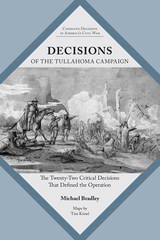
The Tullahoma Campaign took place in Middle Tennessee, setting Union General William S. Rosecrans’s Army of the Cumberland against Confederate General Braxton Bragg’s Army of Tennessee. Rosecrans’s objective was to force the Confederate Army to vacate Middle Tennessee and put pressure on Chattanooga. Through a series of maneuvers, rather than battles, he achieved his goal; however, Union victories at Vicksburg and Gettysburg would overshadow his success.
Decisions of the Tullahoma Campaign introduces readers to critical decisions made by Confederate and Union commanders throughout that eventful summer of 1863. Rather than offering a history of the Tullahoma Campaign, Michael R. Bradley hones in on a sequence of critical decisions confronting commanders on both sides of the clash to provide a blueprint of the campaign at its tactical core. Identifying and exploring the critical decisions in this way allows students of the campaign to progress from a rudimentary sense of the what of warfare, to a mature grasp of why.
Complete with maps and a driving tour, Decisions of the Tullahoma Campaign is an indispensable primer, and readers looking for a concise introduction to the Tullahoma Campaign can tour this sacred ground—or read about it at their leisure—with key insights into the campaign and a deeper understanding of the Civil War itself.
Decisions of the Tullahoma Campaign is the eighth in a series of books that will explore the critical decisions of major campaigns and battles of the Civil War.
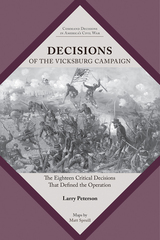
Decisions of the Vicksburg Campaign explores the critical decisions made by Confederate and Federal commanders during the battle and how these decisions shaped its outcome. Rather than offering a history of the battle, Larry Peterson hones in on a sequence of critical decisions made by commanders on both sides of the contest to provide a blueprint of the battles for Vicksburg at their tactical core. Identifying and exploring the critical decisions in this way allows students of the battles to progress from a knowledge of what happened to a mature grasp of why events unfolded as they did.
Complete with maps and a driving tour, Decisions of the Vicksburg Campaign is an indispensable primer, and readers looking for a concise introduction to the battle can tour this sacred ground—or read about it at their leisure—with key insights into the campaign and a deeper understanding of the Civil War itself. Decisions of the Vicksburg Campaign is the twentieth in a series of books that will explore the critical decisions of major campaigns and battles of the Civil War.
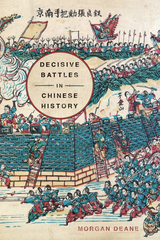
“If you know the enemy and know yourself, you need not fear the result of a hundred battles. If you know yourself but not the enemy, for every victory gained you will also suffer a defeat. If you know neither the enemy nor yourself, you will succumb in every battle.”― Sun Tzu, The Art of War
The study of Chinese battles faces many hurdles that include different spelling systems, a haze of seemingly impenetrable names, places, and ideas, and different approaches to recording history. Early indigenous Chinese histories were written by Confucians with an antimilitary bias, and used rather laconic phrases to describe battles. These accounts were then transmitted to Jesuit missionaries who shared the Confucian disdain for martial matters. The modern discipline of history developed in the West during a time of particular Chinese weakness and political division, resulting in the lack of parallel material. Decisive Battles in Chinese History by Morgan Deane overcomes these obstacles to present the vast span of recorded Chinese history through key battles, from Maling, fought in 342 BC during the Warring States period, to Hengyang in 1944, which marked the end of major Japanese operations in China. Each of the twelve chapters highlights a significant conflict that selectively focuses on unique Chinese characteristics of the time, including belief systems, ruling ideology, the connection between technology and warfare, military theory, political events and rulers, and foreign policy, including China’s eventual interaction with the West. The book pushes back on a variety of ideas and stereotypes, ranging from the Chinese use of gunpowder, their supposedly weak reaction to the West, the viability of the Dynastic Cycle in studying history, the context of Chinese military theory, the exclusivity of martial and cultural spheres, and the uniqueness of Western imperialism. It also offers a groundbreaking reassessment of Mao Zedong’s leadership and his impact on the development of guerilla warfare. In a world filled with disturbing reports of conflict and potential warfare, Decisive Battles in Chinese History offers a unique addition to students, historians, and general readers wishing to better understand Chinese history.
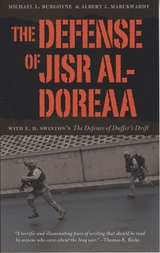
Following the invasion of Iraq in 2003 the U.S. military found itself in a battle with a lethal and adaptive insurgency, where the divisions between enemy and ally were ambiguous at best, and working with the local population was essential for day-to-day survival. From the lessons they learned during multiple tours of duty in Iraq, two American veterans have penned The Defense of Jisr al-Doreaa, an instructional parable of counterinsurgency that addresses the myriad of difficulties associated with war in the postmodern era.
In this tactical primer based on the military classic The Defence of Duffer’s Drift, a young officer deployed for the first time in Iraq receives ground-level lessons about urban combat, communications technology, and high-powered weaponry in an environment where policy meets reality. Over the course of six dreams, the inexperienced soldier fights the same battle again and again, learning each time—the hard way—which false assumptions and misconceptions he needs to discard in order to help his men avoid being killed or captured. As the protagonist struggles with his missions and grapples with the consequences of his mistakes, he develops a keen understanding of counterinsurgency fundamentals and the potential pitfalls of working with the native population.
Accompanied here by the original novella that inspired it, The Defense of Jisr al-Doreaa offers an invaluable resource for cadets and junior military leaders seeking to master counterinsurgency warfare—as well as general readers seeking a deeper understanding of the wars in Iraq and Afghanistan. Just as its predecessor has been a hallmark of military instruction, The Defense of Jisr al-Doreaa will draw the road map for counterinsurgency in the postmodern world.
Visit a website for the book here: www.defenseofJAD.com
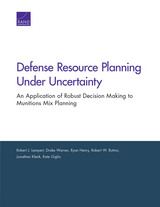


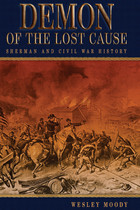

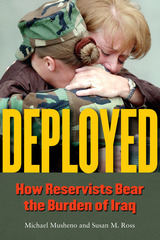
"Deployed is an important and deeply moving book. Here, in this story, the heroic tradition of the American citizen-soldier lives on."
---Andrew J. Bacevich, Professor, Boston University, and author of The New American Militarism: How Americans Are Seduced by War
"Whatever your feelings about Iraq, Deployed is an important and compelling work that illuminates the real human cost of the war, and gives voice to those compelled to fight it."
---Ken Wells, Senior Editor, Condé Nast Portfolio
"Currently, there are few to no books dealing with the sociology of Iraq, and even fewer have empirical data on the experiences of American soldiers. More important, this work provides a strong and needed voice for soldiers---their words are compelling, rich, and moving."
---Morten Ender, Professor of Sociology, United States Military Academy at West Point
"This is a unique book that weaves historical, ethnographic, and organizational approaches for a study of Iraq-War military reservists. . . . the authors' findings challenge the pervading wisdom on reservists' motivations for service; the chemistry between family, reserve duty, and relations with regular military; and the effect that service in Iraq had on them."
---Jerry Lembcke, Associate Professor of Sociology, Holy Cross College
What is it like to be one of the citizen-soldiers summoned to duty in Iraq and Afghanistan? The events of 9/11 were a call to arms for many reservists, as shock, anger, and fear propelled large numbers to volunteer for the opportunity to serve their country in the Middle East. Even the most patriotic, however, had not expected that the wars would last so long or that the Army Reserve would supply so much of the manpower.
Using the soldiers' own voices, Deployed draws upon the life stories of members of an Army Reserve MP Company, who were called to extraordinary service after September 11. The book explores how and why they joined the Army Reserve, how they dealt with the seismic changes in their lives during and after deployment, the evolution of their relationships inside and outside their military unit, and their perspectives on the U.S. Army.
Musheno and Ross uncover five pathways that led these citizens to join the reserves, showing how basic needs and cultural idioms combined to stimulate enlistments. Whatever path led to enlistment, the authors find that citizen-soldiers fall into three distinct categories: adaptive reservists who adjust quickly to the huge changes in their lives abroad and at home, struggling reservists whose troubles are more a product of homegrown circumstances than experiences specific to serving in a war zone, and reservists who are dismissive of military life while they live it and oppose the war even as they fight it. Perhaps most important, Deployed challenges the prevailing stereotype of returning soldiers as war-damaged citizens.
Jacket photograph: AP Photo/Hutchinson News, Travis Morisse.
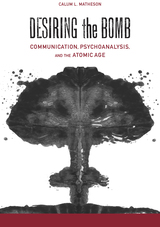
Every culture throughout history has obsessed over various “end of the world” scenarios. The dawn of the Atomic Age marked a new twist in this tale. For the first time, our species became aware of its capacity to deliberately destroy itself. Since that time the Bomb has served as an organizing metaphor, a symbol of human annihilation, a stand-in for the unspeakable void of extinction, and a discursive construct that challenges the limits of communication itself. The parallel fascination with and abhorrence of nuclear weapons has metastasized into a host of other end-of-the-world scenarios, from global pandemics and climate change to zombie uprisings and asteroid collisions.
Desiring the Bomb: Communication, Psychoanalysis, and the Atomic Age explores these world-ending fantasies through the lens of psychoanalysis to reveal their implications for both contemporary apocalyptic culture and the operations of language itself. What accounts for the enduring power of the Bomb as a symbol? What does the prospect of annihilation suggest about language and its limits? Thoroughly researched and accessibly written, this study expands on the theories of Kenneth Burke, Jacques Lacan, Sigmund Freud, and many others from a variety of disciplines to arrive at some answers to these questions.
Calum L. Matheson undertakes a series of case studies—including the Trinity test site, nuclear war games, urban shelter schemes, and contemporary survivalism—and argues that contending with the anxieties (individual, social, cultural, and political) born of the Atomic Age depends on rhetorical conceptions of the “real,” an order of experience that cannot be easily negotiated in language. Using aspects of media studies, rhetorical theory, and psychoanalysis, the author deftly engages the topics of Atomic Age survival, extinction, religion, and fantasy, along with their enduring cultural legacies, to develop an account of the Bomb as a signifier and to explore why some Americans have become fascinated with fantasies of nuclear warfare and narratives of postapocalyptic rebirth.
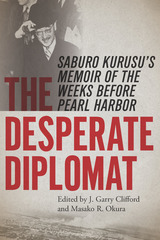

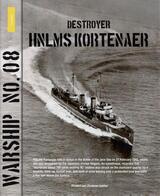

A decimated Shiite shrine in Iraq. The smoking World Trade Center site. The scorched cityscape of 1945 Dresden. Among the most indelible scars left by war is the destroyed landscapes, and such architectural devastation damages far more than mere buildings. Robert Bevan argues herethat shattered buildings are not merely “collateral damage,” but rather calculated acts of cultural annihilation.
From Hitler’s Kristallnacht to the toppling of Saddam Hussein’s statue in the Iraq War, Bevan deftly sifts through military campaigns and their tactics throughout history, and analyzes the cultural impact and catastrophic consequences of architectural destruction. For Bevan, these actions are nothing less than cultural genocide. Ultimately, Bevan forcefully argues for the prosecution of nations that purposely flout established international treaties against destroyed architecture.
A passionate and thought-provoking cri de coeur, The Destruction of Memory raises questions about the costs of war that run deeper than blood and money.
“The idea of a global inheritance seems to have fallen by the wayside and lessons that should have long ago been learned are still being recklessly disregarded. This is what makes Bevan’s book relevant, even urgent: much of the destruction of which it speaks is still under way.”—Financial Times Magazine
“The message of Robert Bevan’s devastating book is that war is about killing cultures, identities and memories as much as it is about killing people and occupying territory.”—Sunday Times
“As Bevan’s fascinating, melancholy book shows, symbolic buildings have long been targeted in and out of war as a particular kind of mnemonic violence against those to whom they are special.”—The Guardian

Bevan combs through world history to highlight a range of wars and conflicts in which the destruction of architecture was pivotal. From Cortez’s razing of Aztec cities to the carpet bombings of Dresden and Tokyo in World War II to the war in the former Yugoslavia, The Destruction of Memory exposes the cultural war that rages behind architectural annihilation, revealing that in this subliminal assault lies the complex aim of exterminating a people. He provocatively argues for “the fatally intertwined experience of genocide and cultural genocide,” ultimately proposing the elevation of cultural genocide from “collateral damage” to a crime punishable by international law.
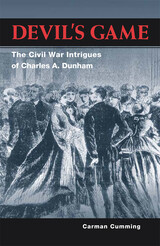
The first book-length study of one of the Civil War's most outlandish and mysterious characters
Devil's Game traces the amazing career of Charles A. Dunham, Civil War spy, forger, journalist, and master of dirty tricks. Writing for a variety of New York papers under alternate names, Dunham routinely faked stories, created new identities, and later boldly cast himself to play those roles. He achieved his greatest infamy when he was called to testify in Washington concerning Abraham Lincoln's assassination. Many parts of Dunham's career remain shadowy, but Cumming offers the first detailed tour of Dunham's convoluted, high-stakes, international deceits, including his effort to sell Lincoln on plans for a raid to capture Jefferson Davis.
Exhaustively researched and unprecedented in depth, this carefully crafted assessment of Dunham's motives, personality, and the complex effects of his schemes changes assumptions about covert operations during the Civil War.
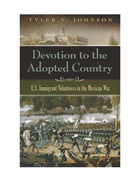
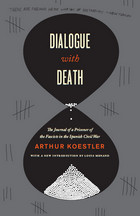
In 1937 during the Spanish Civil War, Arthur Koestler, a German exile writing for a British newspaper, was arrested by Nationalist forces in Málaga. He was then sentenced to execution and spent every day awaiting death—only to be released three months later under pressure from the British government. Out of this experience, Koestler wrote Darkness at Noon, his most acclaimed work in the United States, about a man arrested and executed in a Communist prison.
Dialogue with Death is Koestler’s riveting account of the fall of Málaga to rebel forces, his surreal arrest, and his three months facing death from a prison cell. Despite the harrowing circumstances, Koestler manages to convey the stress of uncertainty, fear, and deprivation of human contact with the keen eye of a reporter.
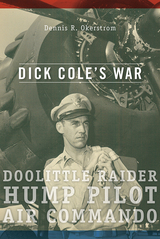
Doolittle’s Raid was only the opening act of Cole’s flying career during the war. When that mission was complete and all of the 16 aircraft had crash-landed in China, many of the survivors were assigned to combat units in Europe. Cole remained in India after their rescue and was assigned to Ferrying Command, flying the Hump of the Himalayas for a year in the world’s worst weather, with inadequate aircraft, few aids to navigation, and inaccurate maps. More than 600 aircraft with their crews were lost during this monumental effort to keep China in the war, but Cole survived and rotated home in 1943. He was home just a few months when he was recruited for the First Air Commandos and he returned to India to participate in Project 9, the aerial invasion of Burma.
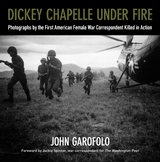
from the front at iwo jima march 5--
Then I remembered and added two words.
under fire--
They looked great."
In 1965, Wisconsin native Georgette "Dickey" Chapelle became the first female American war correspondent to be killed in action. Now, "Dickey Chapelle Under Fire" shares her remarkable story and offers readers the chance to experience Dickey's wide-ranging photography, including several photographs taken during her final patrol in Vietnam.
Dickey Chapelle fought to be taken seriously as a war correspondent and broke down gender barriers for future generations of female journalists. She embedded herself with military units on front lines around the globe, including Iwo Jima and Okinawa, the Dominican Republic, and Vietnam. Dickey sometimes risked her life to tell the story--after smuggling aid to refugees fleeing Hungary, she spent almost two months in a Hungarian prison. For twenty-five years, Dickey's photographs graced the pages of "National Geographic," the "National Observer," "Life," and others. Her tenacity, courage, and compassion shine through in her work, highlighting the human impact of war while telling the bigger story beyond the battlefield.
In "Dickey Chapelle Under Fire," the American public can see the world through Dickey's lens for the first time in almost fifty years, with a foreword by Jackie Spinner, former war correspondent for "The Washington Post."
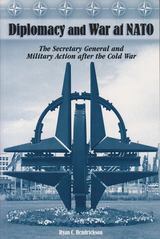
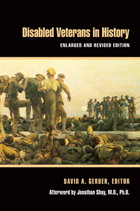
Disabled Veterans in History explores the long-neglected history of those who have sustained lasting injuries or chronic illnesses while serving in uniform. The contributors to this volume cover an impressive range of countries in Europe and North America as well as a wide sweep of chronology from the Ancient World to the present. This revised and enlarged edition, available for the first time in paperback, has been updated to reflect the new realities of war injuries in the 21st century, including PTSD. The book includes an afterword by noted Veterans Administration psychiatrist and MacArthur Award winner Jonathan Shay, a new preface, and an added essay on the changing nature of the American war hero.

“Rule Britannia! Britannia rule the waves,” goes the popular lyric. The fact that the British built the world’s greatest empire on the basis of sea power has led many to assume that the Royal Navy’s place in British life was unchallenged. Yet, as Sarah Kinkel shows, the Navy was the subject of bitter political debate. The rise of British naval power was neither inevitable nor unquestioned: it was the outcome of fierce battles over the shape of Britain’s empire and the bonds of political authority.
Disciplining the Empire explains why the Navy became divisive within Anglo-imperial society even though it was also successful in war. The eighteenth century witnessed the global expansion of British imperial rule, the emergence of new forms of political radicalism, and the fracturing of the British Atlantic in a civil war. The Navy was at the center of these developments. Advocates of a more strictly governed, centralized empire deliberately reshaped the Navy into a disciplined and hierarchical force which they hoped would win battles but also help control imperial populations. When these newly professionalized sea officers were sent to the front lines of trade policing in North America during the 1760s, opponents saw it as an extension of executive power and military authority over civilians—and thus proof of constitutional corruption at home.
The Navy was one among many battlefields where eighteenth-century British subjects struggled to reconcile their debates over liberty and anarchy, and determine whether the empire would be ruled from Parliament down or the people up.
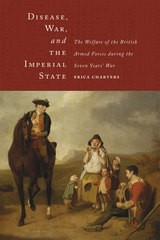
In Disease, War, and the Imperial State, Erica Charters demonstrates how disease played a vital role in shaping strategy and campaigning, British state policy, and imperial relations during the Seven Years’ War. Military medicine was a crucial component of the British war effort; it was central to both eighteenth-century scientific innovation and the moral authority of the British state. Looking beyond the traditional focus of the British state as a fiscal war-making machine, Charters uncovers an imperial state conspicuously attending to the welfare of its armed forces, investing in medical research, and responding to local public opinion. Charters shows military medicine to be a credible scientific endeavor that was similarly responsive to local conditions and demands.
Disease, War, and the Imperial State is an engaging study of early modern warfare and statecraft, one focused on the endless and laborious task of managing manpower in the face of virulent disease in the field, political opposition at home, and the clamor of public opinion in both Britain and its colonies.

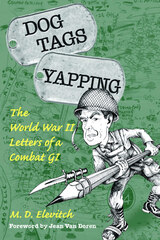
A chronicle of war infused with uncommon cheer, Dog Tags Yapping: The World War II Letters of a Combat GI is a young man’s education in life and death and a narrative of war told completely in letters.
During World War II, thousands of high school graduates were drafted into the army to be trained in colleges as engineers or other technicians but instead were assigned to fighting units and joined the great assault in Europe after D-Day. One of those reprogrammed combat infantrymen was Morton Elevitch from Duluth, Minnesota. Elevitch’s cartoons, drawings, and extremely unconventional letters home—rescued from box-in-the-basement oblivion after a more than fifty-year dormancy—recover the story of one rerouted GI in a voice that is compelling and new. Embellished with a boyish flair, the quirky and playful documents collected here impart a distinctly personal and uncalculated record of war, family, and coming of age. “It’s much easier to wield a melancholy pen than to sit down and cry,” Elevitch declares to his father.
Sparkling with a patina of wit and the bittersweet allure of lost innocence, the words and letters of “Privitch Elevate” offer the immediacy of the events as they unfolded. With the ease and expertise expected of a more seasoned storyteller, the young Elevitch escorts readers through his basic training and departure for Europe, duty in Brittany with the 94th Division and departure for Germany, combat under Patton’s command, wounding by mortar fragments, convalescence in England, and his return to France with the Signal Corps to guard prisoners and await demobilization. But along with these letters are the stories of his relationships with his parents, his brother, the men of his company and even the prisoners of war. The author’s perspectives on the war radically change. Both comic and tragic in its treatment of war’s chaos and tedium, this sensitive personal history covers experiences from the adjustment to military life and the temptations of flesh to the pain of wounds and recovery and the exposure to foreign countries and cultures.
Presaging his career as a novelist and editor, Elevitch’s words and drawings sketch an audacious and highly imaginative portrait of a young man during an exceptional time in world history. Evocative of life lived and nearly lost, his jarring accounts of combat reveal a soldier who was wounded not only in body but also in soul, in a war that changed him forever—just as it changed everyone it touched. Reproduced here as they were originally written, alongside a gallery of photos and hand-drawn battle maps, Elevitch’s cartoons and letters were initially intended for only three persons. But with their unique historical value and affecting exploration of the human spirit, they resurface in Dog Tags Yapping and result in an exhilarating ride for all readers through his “wild bivouac of the mind.”
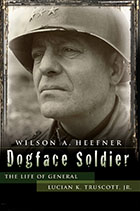
Yet no definitive history of his life has been compiled. Wilson Heefner corrects that with the first authoritative biography of this distinguished American military leader. Heefner has undertaken impressive research in primary sources—as well as interviews with family members and former associates—to shed new light on this overlooked hero. He presents Truscott as a soldier who was shaped by his upbringing, civilian and military education, family life, friendships, and evolving experiences as a commander both in and out of combat.
Heefner’s brisk narrative explores Truscott’s career through his three decades in the Army and defines his roles in key operations. It also examines Truscott’s postwar role as military governor of Bavaria, particularly in improving living conditions for Jewish displaced persons, removing Nazis from civil government, and assisting in the trials of German war criminals. And it offers the first comprehensive examination of his subsequent career in the Central Intelligence Agency, where he served as senior CIA representative in West Germany during the early days of the Cold War, and later as CIA Director Allen Dulles’s deputy director for coordination in Washington.
Dogface Soldier is a portrait of a man who earned a reputation for being honest, forthright, fearless, and aggressive, both as a military officer and in his personal life—a man who, at the dedication ceremony for the Anzio-Nettuno American cemetery in 1945, turned away from the crowd and to the thousands of crosses stretching before him to address those buried there. Heefner has written a definitive biography of a great soldier and patriot.

No longer willing to accept naval blockades, the impressment of American seamen, and seizures of American ships and cargos, the United States declared war on Great Britain. The aim was to frighten Britain into concessions and, if that failed, to bring the war to a swift conclusion with a quick strike at Canada. But the British refused to cave in to American demands, the Canadian campaign ended in disaster, and the U.S. government had to flee Washington, D.C., when it was invaded and burned by a British army.
By all objective measures, the War of 1812 was a debacle for the young republic, and yet it was celebrated as a great military triumph. The American people believed they had won the war and expelled the invader. Oliver H. Perry became a military hero, Francis Scott Key composed what became the national anthem and commenced a national reverence for the flag, and the U.S.S. Constitution, "Old Ironsides," became a symbol of American invincibility. Every aspect of the war, from its causes to its conclusion, was refashioned to heighten the successes, obscure the mistakes, and blur embarrassing distinctions, long before there were mass media or public relations officers in the Pentagon.
In this entertaining and meticulously researched book by America's leading authority on the War of 1812, Donald R. Hickey dispels the many misconcep-tions that distort our view of America's second war with Great Britain. Embracing military, naval, political, economic, and diplomatic analyses, Hickey looks carefully at how the war was fought between 1812 and 1815, and how it was remembered thereafter. Was the original declaration of war a bluff? What were the real roles of Canadian traitor Joseph Willcocks, Mohawk leader John Norton, pirate Jean Laffite, and American naval hero Lucy Baker? Who killed the Shawnee chief Tecumseh and who shot the British general Isaac Brock? Who actually won the war, and what is its lasting legacy? Hickey peels away fantasies and embellishments to explore why cer-tain myths gained currency and how they contributed to the way that the United States and Canada view themselves and each other.
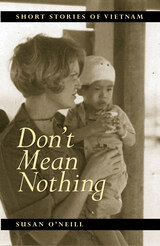
For American nurses in Vietnam, and the men among whom they worked and lived, a common defense against the steady onslaught of dead and dying, wounded and maimed, was a feigned indifference—the irony of the powerless. With the assistance of alcohol, drugs, and casual sex, "Don't mean nothing" became their mantra, a means of coping with the other war—the war against total mental breakdown.
Each or these tales offers new and profound insight into the ways the war in Vietnam forever changed the lives of everyone who served there.
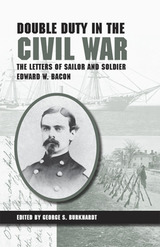
In 1861 at the age of eighteen, Edward Woolsey Bacon, a Yale student and son of well-known abolitionist minister Leonard Bacon, left his home in New Haven, Connecticut, to fight for the United States. Over the next four years Bacon served in both the Union navy and army, which gave him a sweeping view of the Civil War. His postings included being a captain’s clerk on the USS Iroquois, a hospital clerk in his hometown, a captain in the 29th Connecticut Infantry (Colored), and a major in the 117th U.S. Colored Infantry, and he described these experiences in vibrant letters to his friends and family. Historian George S. Burkhardt has compiled these letters, as well as Bacon’s diary in the impressive Double Duty in the Civil War: The Letters of Sailor and Soldier Edward W. Bacon.
Bacon tells of hunting Confederate commerce raiders on the high seas, enduring the tedium of blockade duty, and taking part in riverine warfare on the Mississippi. He recalls sweating in South Carolina as an infantry officer during drill and picket duty, suffering constant danger in the battlefield trenches of Virginia, marching victoriously on fallen Richmond, and tolerating the boredom of occupation duty in Texas.
His highly entertaining letters shed new light on naval affairs and reveal a close-knit family life. The narrative of his duty with black troops is especially valuable, since few first-hand accounts from white officers of the U.S. Colored Troops exist. Furthermore, his beliefs about race, slavery, and the Union cause were unconventional for the time and stand in contrast to those held by many of his contemporaries.
Double Duty in the Civil War is filled with lively descriptions of the men Bacon met and the events he experienced. With Burkhardt’s careful editing and useful annotations, Bacon’s letters and diary excerpts give rare insight into areas of the Civil War that have been neglected because of a lack of available sources. Given the scarcity of eyewitness testimonies to navy life and life in African American regiments, this book is a rarity indeed.

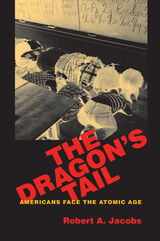
Even after Hiroshima and Nagasaki, most Americans may not have been sure what an atomic bomb was or how it worked. But they did sense that it had fundamentally changed the future of the human race. In this book, Robert Jacobs analyzes the early impact of nuclear weapons on American culture and society. He does so by examining a broad range of stories, or "nuclear narratives," that sought to come to grips with the implications of the bomb's unprecedented and almost unimaginable power.
Beginning with what he calls the "primary nuclear narrative," which depicted atomic power as a critical agent of social change that would either destroy the world or transform it for the better, Jacobs explores a variety of common themes and images related to the destructive power of the bomb, the effects of radiation, and ways of surviving nuclear war. He looks at civil defense pamphlets, magazines, novels, and films to recover the stories the U.S. government told its citizens and soldiers as well as those presented in popular culture.
According to Jacobs, this early period of Cold War nuclear culture—from 1945 to the banning of above-ground testing in 1963—was distinctive for two reasons: not only did atmospheric testing make Americans keenly aware of the presence of nuclear weapons in their lives, but radioactive fallout from the tests also made these weapons a serious threat to public health, separate from yet directly linked to the danger of nuclear war.
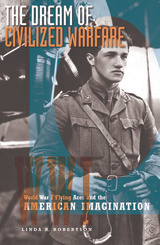

Drones and Support for the Use of Force uses experimental research to analyze the effects of combat drones on Americans’ support for the use of force. The authors’ findings—that drones have had important but nuanced effects on support for the use of force—have implications for democratic control of military action and civil-military relations and provide insight into how the proliferation of military technologies influences foreign policy.
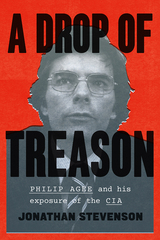
The first biography of this contentious, legendary man, Jonathan Stevenson’s A Drop of Treason is a thorough portrait of Agee and his place in the history of American foreign policy and the intelligence community during the Cold War and beyond. Unlike mere whistleblowers, Agee exposed American spies by publicly blowing their covers. And he didn’t stop there—his was a lifelong political struggle that firmly allied him with the social movements of the global left and against the American project itself from the early 1970s on. Stevenson examines Agee’s decision to turn, how he sustained it, and how his actions intersected with world events.
Having made profound betrayals and questionable decisions, Agee lived a rollicking, existentially fraught life filled with risk. He traveled the world, enlisted Gabriel García Márquez in his cause, married a ballerina, and fought for what he believed was right. Raised a conservative Jesuit in Tampa, he died a socialist expat in Havana. In A Drop of Treason, Stevenson reveals what made Agee tick—and what made him run.

READERS
Browse our collection.
PUBLISHERS
See BiblioVault's publisher services.
STUDENT SERVICES
Files for college accessibility offices.
UChicago Accessibility Resources
home | accessibility | search | about | contact us
BiblioVault ® 2001 - 2024
The University of Chicago Press









